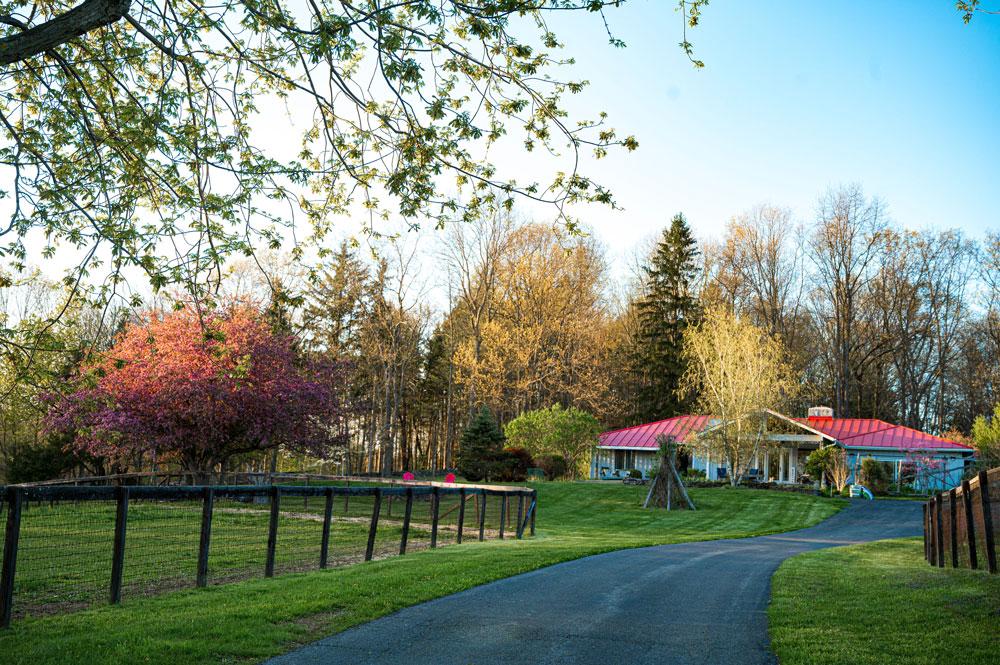In the northern Dutchess County, a little town called Rhinebeck is a historically-significant destination for anyone seeking rustic charm and stylish repose within the Hudson Valley. This reputation has been developed upon foundations laid over three centuries ago, interwoven with the larger narrative of American development, and the evolution of travel, commerce, and leisure in the region.
Let’s trace the history of hospitality in Rhinebeck.
Crossroads and Taverns
Before being settled by Europeans, the land that would become Rhinebeck was home to the Sepasco band of Native Americans. Their established trail network, known as the Sepasco Trail, helped shape early transportation routes. In 1686, Dutch settlers purchased 2,200 acres from the Sepasco tribe.
Judge Henry Beekman, an early landowner, brought in settlers including William Traphagen, who likely established Rhinebeck’s first tavern around 1704 at the intersection of the King’s Highway (now Route 9) and the Sepasco Trail (now Market Street).

William Trafhagen, 1915. Source: Library of Congress
The tavern served as a rest stop for colonial travelers, offering food, drink, and stabling for horses. In 1766, the inn was moved and expanded into what became the Beekman Arms, one of America’s oldest continuously operating inns. During the Revolutionary War, it hosted Continental Army leaders like Washington, Hamilton, and Schuyler, served as a militia drill site, and provided refuge during the British burning of Kingston in 1777.
Growth Along the River and Road
Following independence, Rhinebeck formally became a town in 1788 and a village in 1834. Its place on the Albany Post Road and at a major Hudson River ferry crossing made it a key transit hub. Stagecoaches and riverboats made daily stops, which in turn made a growing network of inns and taverns necessary. Competing taverns—like Kip Tavern, where Aaron Burr headquartered his 1804 gubernatorial run—fueled both political and commercial vibrancy.

A 1798 map of Rhinebeck. Source: Library of Congress
Economic diversification emerged in the 1850s, as Rhinebeck became known for high-quality woodworking and carriage manufacturing.
Rails, Riverboats, and the Gilded Age
The Hudson River Railroad reached Rhinecliff in 1851, transforming it from a coach stop to a rail-connected destination. Rhinecliff soon became a hub for steamboat and train transfers. The Rhinecliff Hotel was built in 1854 to accommodate this traffic. Steamboats from New York delivered summer tourists, who rode carriages uphill to the village inns.
The Gilded Age brought wealthy New Yorkers—Astors, Livingstons, Suckleys—to build grand river estates, creating demand for luxury accommodations and services. Wilderstein, remodeled in 1888, exemplified this opulence. By the late 1800s, Rhinebeck had become a leisure retreat.
Adding to this was its identity as the “Violet Capital of the World,” with a booming floral export industry facilitated by rail transport. You can find an echo of this in our Sweet Violet Room.
20th-Century Shifts: From Motor Inns to B&Bs
With cars came new travel patterns. The Kingston-Rhinecliff Bridge’s completion in 1957 replaced ferries, ushering in roadside motels like the Rhinebeck Motel and Village Inn. These motor lodges served an emerging middle class of weekend travelers.
Historic interest surged during the 1976 bicentennial, and B&Bs began opening in Rhinebeck’s historic homes. The Olde Rhinebeck Inn exemplifies this trend. The Dutchess County Fair, which made Rhinebeck its permanent home in 1919, became one of the largest in New York, drawing hundreds of thousands annually. It was in this time that Whistlewood was founded in the mid-1980s, adding a boutique bed & breakfast to a horse boarding farm.
21st-Century Trends: Boutique Inns, Airbnb, and Agritourism
In the 2000s, Rhinebeck became a fashionable, year-round destination, especially thanks to the rise of the Internet. Back in 1996, Whistlewood was mentioned in the Daily News for being a bed & breakfast with a website.
Today, short-term rentals via Airbnb now complement hotels and B&Bs, appealing to visitors seeking unique, private stays in historic homes and farmhouses. At WhistleWood Farm, a working horse farm B&B, we connect agritourism with hospitality, offering fresh eggs, animal visits, and hiking trails. These immersive experiences reflect growing demand for connection to Rhinebeck’s agricultural history.
The Making of a Destination
Rhinebeck’s hospitality story spans over 300 years, beginning with a tavern at a colonial crossroads and evolving into a layered, resilient tourism economy. Each mode of transportation—stagecoach, steamboat, railroad, automobile, digital platform—reshaped how and why people came.
What once served as a practical way-stop became a curated destination with evolving guest expectations. Today, Rhinebeck’s mix of heritage, landscape, and lived-in charm welcomes travelers into a living narrative, where past and present meet around the firepit, at the fairgrounds, or among the lavender and chickens at Whistlewood.


